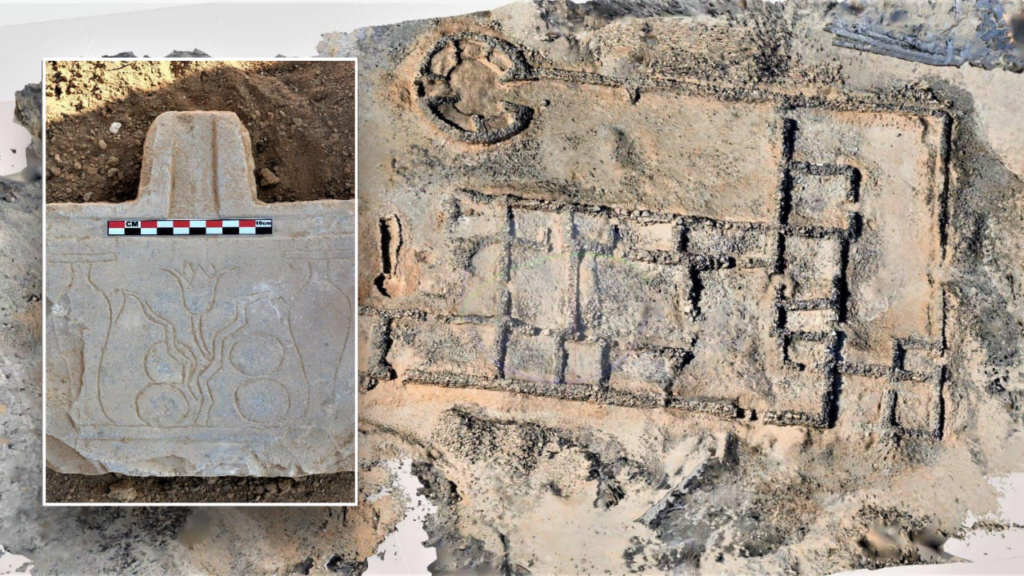In a remarkable archaeological breakthrough, Egyptian officials have recently unveiled the discovery of a 3,000-year-old mining complex that bears significant historical and cultural relevance. This ancient site, which includes the remains of living quarters, workshops, baths, and a sophisticated factory for gold extraction, was unearthed during excavations at Jabal Sukari. Located in proximity to the modern town of Marsa Alam within the Red Sea Governorate, the findings were reported by the Egyptian Ministry of Tourism and Antiquities on social media, particularly through a Facebook post dated February 25.
The excavation revealed a mining camp that dates back to approximately the time of the New Kingdom in Ancient Egypt, approximately 1,000 BCE, and features remnants of a complete factory dedicated to the extraction of gold from quartz veins. According to the translated statement from the Ministry, the mining operations were intricate, involving multiple stages of processing. These stages included the crushing, grinding, and pulverizing of quartz stone, as well as passing through filtration and sedimentation basins prior to moving on to smelting in clay furnaces. This robust evidence indicates the advanced metallurgical techniques that the ancient Egyptians employed in their quest for wealth and resources.
Among the significant finds were the living quarters that miners utilized, as well as several workshops, mining stations, administrative buildings, and even places of worship. The excavation also revealed Ptolemaic baths, which provide insight into the daily lives and communal activities of those who worked in the mines. The archaeological team unearthed a striking collection of 628 ostraca, broken pottery, and stone pieces on which hieroglyphs, Egyptian demotic script, and Greek inscriptions were recorded, indicating a thriving multicultural environment.
The discoveries extended to a variety of artifacts, including several bronze coins from the Ptolemaic era, a plethora of terracotta statues reflecting human and animal forms typical of the Greco-Roman period, and various stone statues of deities like Bastet and Harpocrates. These offerings highlight the religious practices and artistic expressions of the time. Furthermore, the team also unearthed five offering tables dating back to the Ptolemaic era, as well as an assortment of pottery vessels designated for various domestic uses, perfumes, medicines, and incense. Among these artifacts were also decorative beads made from gemstones and intricate tools crafted from shells.
According to the officials, the site is situated near the Sukari Gold Mine, which began operations in 2009. Safeguarding the invaluable artifacts, authorities have ensured their relocation to a secure environment, eliminating risks associated with ongoing mining activities in the region. The Secretary-General of the Supreme Council of Antiquities emphasized the importance of this ongoing project, stating that it significantly enhances our understanding of ancient Egyptian mining techniques while offering a more comprehensive view of the social, religious, and economic life sustained by these industrious communities in the Eastern Desert through various ages.
Minister of Tourism and Antiquities Sherif Fathy expressed his enthusiasm regarding these discoveries, revealing their potential to unlock many historical secrets within this rich area. He underscored the project’s essential role in preserving Egypt’s cultural heritage while integrating it into the broader framework of national economic and developmental strategies.
As we look further into Egypt’s archaeological endeavors, the latest discoveries add to a growing list of significant findings made in the country in early 2025. Just last month, researchers stumbled upon the long-lost tomb of King Thutmose II—the first royal tomb to be discovered since 1922, and earlier in January, the ancient burial site of Teti Neb Fu, a physician who tended to pharaohs, was found. These findings suggest that Egypt’s rich historical panorama continues to reveal itself to the world, further mesmerizing scholars and history enthusiasts alike.











